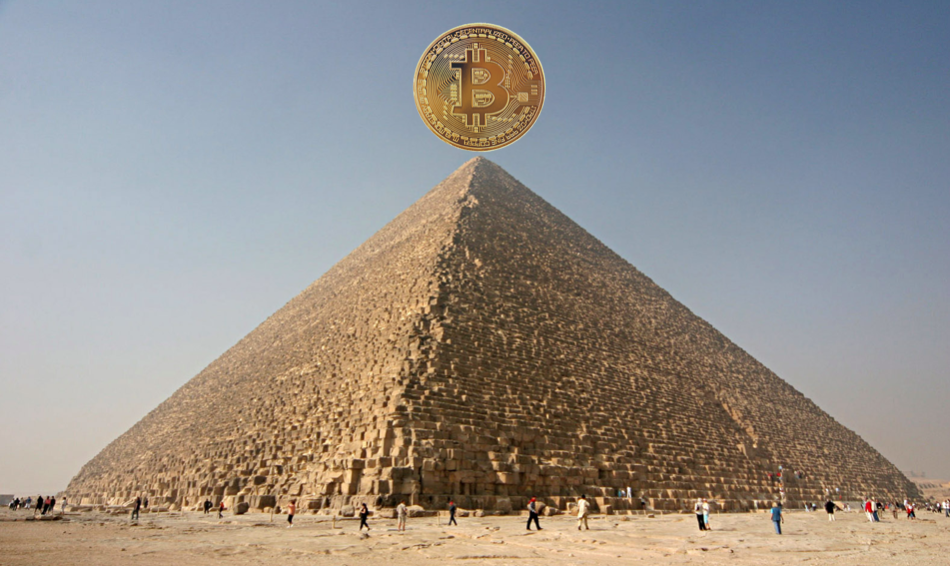Bitcoin destroys value as running its network costs tens of millions of dollars per day. Its rise in price is a consequence of market manipulation combined with the fact that very few investors elect to sell, precisely because its price is rising. Over the long run, the price of Bitcoin is guaranteed to collapse as the network costs rise in line with the price of Bitcoin itself.
If you think that you are a sophisticated investor and don’t understand this, you don’t understand Bitcoin.
Would you invest in a company that’s losing billions of dollars every year, relies exclusively on new share issuances to fund its directors’ lavish lifestyle, has no assets, doesn’t do anything, and doesn’t have the slightest intention of doing anything, ever?
Would you invest in this company if I told you that it’s unaudited, unregulated, doesn’t disclose any accounts, that its directors don’t bear any liability whatsoever, that its shares trade mostly on shady unregulated offshore exchanges that engage in market manipulation and can prevent you from cashing out when you decide to sell, and there’d be nothing you could do about it?
What if I told you that this company’s shares are up tenfold in the past year?
This is, in a nutshell, Bitcoin as an investment.
Mining cost equilibrium
The Bitcoin network is run by miners, and these miners are rewarded in Bitcoins for their efforts - currently to the tune of 900 Bitcoins per day. Miners run computers 24/7 to keep the network up; it doesn’t matter how many computers are running, the network still works the same. The 900 Bitcoins are split between miners according to the number of computers each miner is running. Want to get more Bitcoin? Install more computers. Trying to form a cartel and don’t add more computers to keep costs down? Joke’s on you, anyone can mine Bitcoin, and new miners come in with their own computers to get a piece of the pie.
Thus miners are incentivised to add capacity until mining costs equal the rewards they’re getting for their efforts, which currently stand at:
Mining Costs = 900 * $BTC = $40 million / day
The mining costs are comprised of the cost of computers (called “mining rigs”), rent, salaries, and mostly electricity. Miners cover those costs in many ways - by taking out loans, attracting investments, or selling the Bitcoins they’re getting as rewards. Whatever the origin of their funds, the idea remains the same: mining makes sense despite its costs because miners can sell their Bitcoin rewards.
The more Bitcoin rises in price, the costlier its network is to run. Of course, following a sudden spike, it can take a few months for the miners to increase their capacity, but it’s one of the only three inevitable things in life: death, taxes, and Bitcoin mining costs.
As a result, Bitcoin is under constant selling pressure by miners trying to cash out in order to pay their bills, and the only way to get the price from collapsing is to always attract new investors.
Market manipulation
Because Bitcoin doesn’t pay dividends, doesn’t give any rights, and doesn’t have any use cases apart from being sold to someone else, its only promise as an investment, is that you’ll be able to sell it to someone else at a higher price. At first sight, this promise seems unachievable - how can its price go up if the only thing that’s guaranteed, are expenses to infinity without any revenue?
There are three fundamental factors that make Bitcoin’s price go up:
- it’s used for (mostly illegal) transactions, where one person buys it, gives it to another person, who then sells it, thus obfuscating the reality of the transaction; the fact that there’s a few days’ lag between buying and selling creates demand for Bitcoin as its readily available supply is limited
- a lot of people buy Bitcoin, and wait for it to go up in price before selling, creating additional demand and reducing readily available supply
- market insiders manipulate its price upward
As long as Bitcoin’s price goes up, more people are enticed to buy and wait for it to go up in price, while those who already bought are incentivised not to sell as they hope it will continue to go up.
The problem is, the more Bitcoin’s price goes up, the higher the selling pressure from miners who need to pay for rising network costs, and the more people need to be enticed to buy Bitcoin and not to sell.
Bitcoin trades mostly on unregulated offshore exchanges, and mostly not against real money, but against the USDT stablecoin, itself unaudited and unregulated. When you wire your money to these unregulated exchanges, you get USDT to trade with - exactly like casino chips. USDTs are worth something inside the exchange, but you need to cash out to make use of your funds in the real world.
People trust these exchanges mostly because they have heard about them from friends, have been exposed to them through online ads and countless social media accounts, and because these exchanges look and act exactly like legitimate stock trading apps. The charts, the buttons, the captions and labels are copied so as to make these unregulated exchanges look like their regulated counterparts. And people trust USDT because these unregulated exchanges are keeping its value pegged to the US dollar - so that again, USDT looks and feels like the US dollar.
However, behind their nice looks, neither these exchanges nor the USDT stablecoin have to comply with the regulations and laws that make it safe to invest in stocks or other regulated financial instruments. They can manipulate the price of Bitcoin by printing billions of USDTs out of thin air, and buying everyone’s Bitcoin with them. The price of Bitcoin will shoot through the roof, and investors will flock in to buy - with real dollars.
Bitcoin going up doesn’t mean it’s a good investment
Legendary investor Jim Chanos once said:
The greatest defense attorney and the harshest prosecutor for a company is its stock price.
It’s a fancy way of saying that if a stock goes up, it means that the company behind it is doing well. And that’s how people intuitively tend to invest - they buy what’s going up, because they assume market forces are always right.
But once again, Bitcoin is mostly traded on unregulated offshore exchanges. Its price is manipulated beyond the wildest nightmares of retail investors. Crypto preys on retail’s coziness with investing because retail has been protected by regulators from scammers for so long that they forgot what a slaughterhouse an unregulated market is.
Crypto apologists point our the fact that “regulated markets are manipulated, too” - referring to the central banks’ propensity of propping up the markets in times of crisis. The difference with crypto, is the purpose and the scope of manipulation. Central banks’ stated mandate is financial stability - they support markets to prevent the economy from collapsing into a deflationary spiral. Crypto’s mandate is ever-rising prices to entice an ever-growing flock of new investors to buy, and dissuade past investors from selling.
There is very little real cash in the crypto economy. Its founding principle is to prevent people from trying to sell coins for real money.
Bitcoin is a stupid half-Ponzi, half-pyramid scheme
There is nothing behind Bitcoin but the promise of ever-rising prices thanks to a never-ending stream of new buyers. Bitcoin’s only differences with a Ponzi scheme, is that:
- there’s no central party organising the scam - its shilling is much more decentralised than the Bitcoin ledger itself
- nobody is pretending that there are some kind of operations that are supposed to produce economic benefits that will be used to reward investors
Meaning that Bitcoin is an even stupider investment than a Ponzi scheme - you are 100% sure that there’s nothing behind it, and that it’s purely a game of “who manages to get out at the top”, with huge running costs.
The ever-rising running costs are one factor that doom the scheme from the start. The differential equation governing Bitcoin’s price is:
d($BTC)/dt = (B(t) - S(t)) - R(t).$BTC
where B(t) are the buying flows, S(t) are the selling flows, and R is the rate of Bitcoin rewards.
Everyone with a little bit of mathematics background knows that the solution to this equation is unstable. You need to carefully massage the B(t) - S(t) part for $BTC not to blow up. But if $BTC does blow up, B(t) needs to be an exponential function. Today you need $50 million of new cash inflows, a week later - $100 million, and at the end of the year - all the money in the world.
Bitcoin is guaranteed to blow up. In the meantime, a lot of people will live in the illusion that they’re rich. Until we run out of new suckers.

